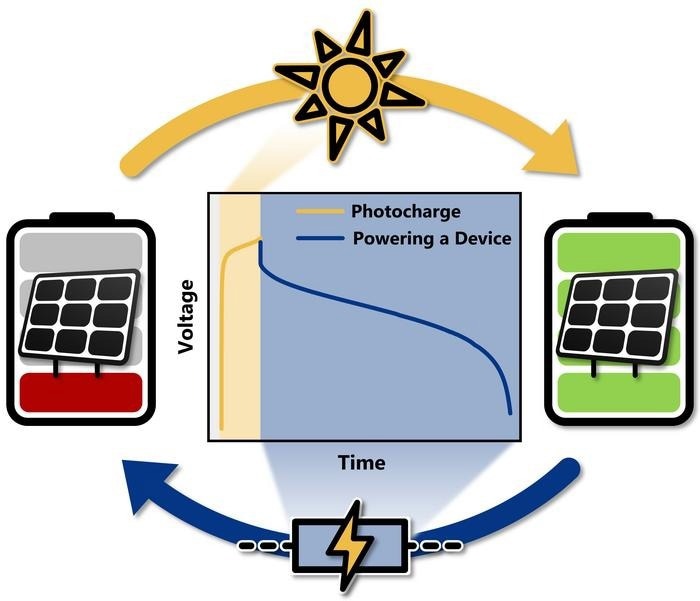Intelligent devices and sensors connected in a network have the potential to enhance the energy efficiency of both consumer products and buildings by continuously monitoring their energy consumption.

The monolithically integrated photo battery made of organic materials achieves a discharge potential of 3.6 volts. Image Credit: Robin Wessling
In Internet of Things (IoT) technology, miniature devices like these demand ultra-compact energy sources for self-sustained operation.
To fulfill this need, a team of researchers from the University of Freiburg's Cluster of Excellence Living, Adaptive, and Energy-Autonomous Materials Systems (livMatS) has engineered a monolithically integrated photo-battery. This innovative system combines an organic polymer-based battery with a multi-junction organic solar cell.
Rodrigo Delgado Andrés and Dr Uli Würfel from the University of Freiburg, along with Robin Wessling and Professor Dr Birgit Esser from the University of Ulm, unveiled a groundbreaking achievement: the inaugural monolithically integrated photo battery composed of organic materials, successfully attaining a discharge potential of 3.6 V.
This accomplishment marks one of the pioneering systems capable of energizing miniature devices, and their findings have been published in the journal Energy & Environmental Science.
Combination of a Multi-Junction Solar Cell and a Dual-Ion Battery
The researchers developed a scalable method for the photo battery, which allows them to manufacture organic solar cells out of five active layers.
The system achieves relatively high voltages of 4.2 volts with this solar cell.
Robin Wessling, University of Ulm
The team combined this multi-junction solar cell with a so-called dual-ion battery, which is capable of being charged at high currents, unlike the cathodes of conventional lithium batteries.
With careful control of illumination intensity and discharge rates, a photo battery constructed in this way is capable of rapid charging in less than 15 minutes at discharge capacities of up to 22 milliampere hours per gram (mAh g-1).
In combination with the averaged discharge potential of 3.6 volts, the devices can provide an energy density of 69 milliwatt hours per gram (mWh g-1) and a power density of 95 milliwatts per gram (mW g-1).
Our system thus lays the foundation for more in-depth research and further developments in the area of organic photo batteries.
Robin Wessling, University of Ulm
Journal Reference
Andrés, R. D., et al. (2023) Organic photo-battery with high operating voltage using a multi-junction organic solar cell and an organic redox-polymer-based battery. Energy & Environmental Science. doi.org/10.1039/D3EE01822A.